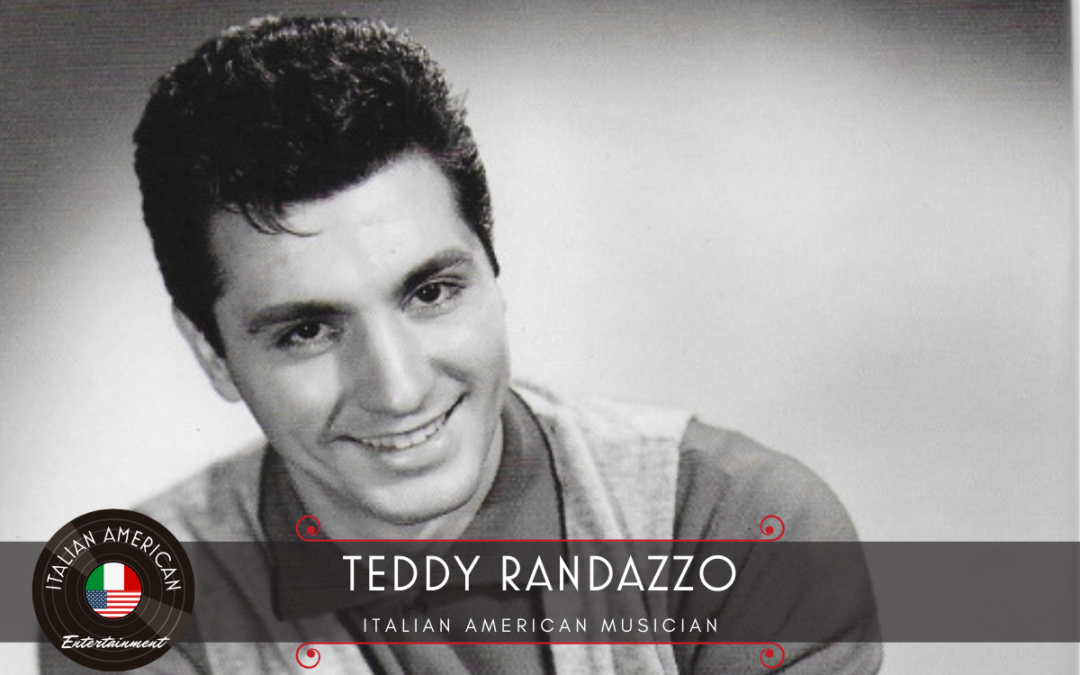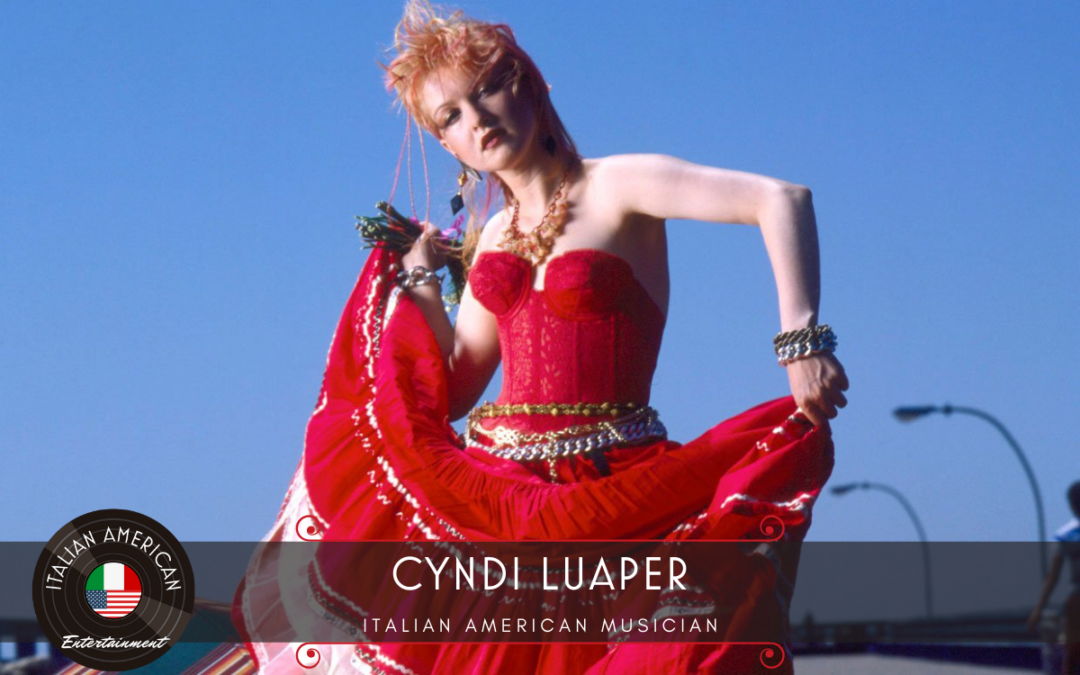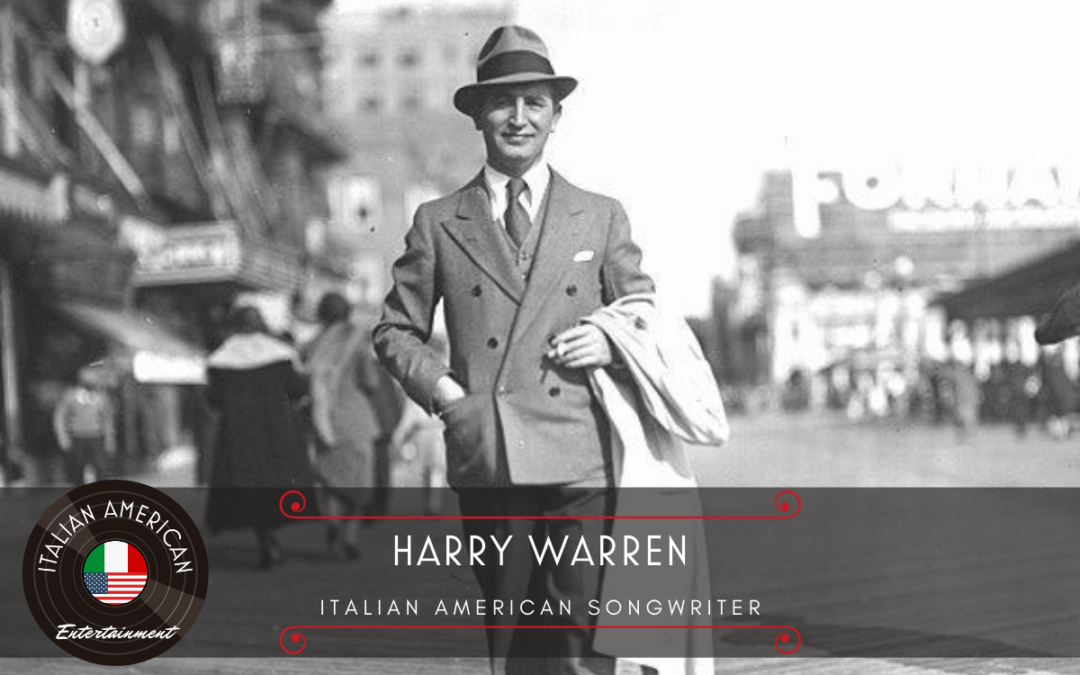
by Vince Chiarelli | Oct 10, 2020 | Blog, Musicians
Michael Giacchino was born in Riverside Township, New Jersey in 1967. His father’s ancestors were Italian immigrants from Sicily and his mother’s ancestors emigrated from Abruzzo; he holds dual American and Italian citizenship.
Giacchino began combining images and music at age 10, when he began creating stop-motion animation with homemade soundtracks in his basement. While in high school, an art teacher who mentored Giacchino recommended to his parents that he attend the School of Visual Arts in New York City. Giacchino enrolled at SVA, majoring in film production and minoring in history. During his final year at SVA, his instructor in film publicity announced an unpaid internship was available at Universal Pictures. Giacchino, who was the only one interested, obtained the six-month position, which he filled at night while attending school during the day and working at Macy’s to pay his rent. He graduated from SVA in 1990 with a Bachelor of Fine Arts, after which he took music classes at the Juilliard School.
When Giacchino’s internship ended, Universal hired him, giving him a job upon graduation from college. He later moved to Disney, and when Disney relocated to Los Angeles, Giacchino moved with them, working in publicity, while taking night classes in instrumentation and orchestration at UCLA. His work for Disney had him interacting with the various personnel who worked in films, such as the producers who hired composers, so when a job at Disney Interactive opened for a producer, Giacchino obtained the job, thinking he could hire himself to write music for the games he produced.
Giacchino’s composition work for Disney Interactive during the 16-bit era included the Sega Genesis game Gargoyles, the SNES game Maui Mallard in Cold Shadow and the various console versions of The Lion King. However his first major composition was for the DreamWorks video game adaptation of the 1997 movie, The Lost World: Jurassic Park. The video game was one of the first PlayStation- (also on Sega Saturn) console titles to be recorded with an original live orchestral score. Giacchino has since continued his relationship with DreamWorks which also included composing the score for the Small Soldiers video game in 1998, providing full orchestral scores for many of their popular video games. Giacchino’s award-winning compositions covers the first four installments of the Medal of Honor series, (Medal of Honor, Underground, Allied Assault and Frontline), Heroes: 2, and Medal of Honor: Airborne and also the scores for several other World War II-related video games like Secret Weapons Over Normandy, Call of Duty and Call of Duty: Finest Hour.
Giacchino’s work on various video games led to his entrance into television. In 2001, J. J. Abrams, producer of the television series Alias, discovered Giacchino through his video game work and asked him to provide the new show’s soundtrack. The soundtrack featured a mix of full orchestral pieces frequently intermingled with upbeat electronic music, a departure from much of his previous work. Giacchino would go on to provide the score for J. J. Abrams’s 2004 television series Lost,] creating an acclaimed score which employed a unique process of using spare pieces of a plane fuselage for percussion parts. The score for Lost is also notable for a signature thematic motif: a brass fall-off at the end of certain themes.
In 2004, Giacchino received his first big feature film commission. Brad Bird, director of Pixar’s The Incredibles, asked Giacchino to provide the soundtrack for the film after having heard his work on Alias. The upbeat jazz orchestral sound was a departure in style not only for Giacchino but for Pixar, which had previously relied on Randy and Thomas Newman for all of its films. Giacchino was nominated for two Grammy Awards in 2005 for The Incredibles: Best Score Soundtrack Album for Motion Picture, Television or Other Visual Media and Best Instrumental Composition.
Giacchino’s next musical achievement was his Paris-inspired score for the Disney-Pixar film Ratatouille, which includes the theme song “Le Festin”, performed by French artist Camille. He received his first Academy Award nomination for this score. He also created the score for Abrams’ 2009 Star Trek film. Giacchino scored the Pixar film Up, for which he collaborated with director Pete Docter. This marked the first time Giacchino worked with a Pixar director other than Brad Bird. This work gained Giacchino his first Academy Award for Best Original Score: the first-ever win for Pixar in that category.
In 2016, Giacchino composed the score for the Marvel film Doctor Strange, as well as the score for the Disney film Zootopia. In September 2016, it was announced that Giacchino had been chosen to replace composer Alexandre Desplat as the composer for the Star Wars anthology film Rogue One after Desplat was unavailable following reshoots. Giacchino then scored two more Marvel films, 2017’s Spider-Man: Homecoming and its sequel, 2019’s Spider-Man: Far From Home.
Giacchino returned to Pixar to score Coco (2017) and Incredibles 2 (2018). He also composed the score for Taika Waititi’s Jojo Rabbit. In 2021, Giacchino will re-team with Matt Reeves to score The Batman.
Source: Wiki

by Vince Chiarelli | Oct 9, 2020 | Blog, Musicians
Giuseppe “Joe” Venuti was an Italian-American jazz musician and pioneer jazz violinist. He was born in Philadelphia in 1903.
Considered the father of jazz violin, he pioneered the use of string instruments in jazz along with the guitarist Eddie Lang, a friend since childhood. Through the 1920s and early 1930s, Venuti and Lang made many recordings, as leader and as featured soloists. He and Lang became so well known for their ‘hot’ violin and guitar solos that on many commercial dance recordings they were hired to do 12- or 24-bar duos towards the end of otherwise stock dance arrangements. In 1926, Venuti and Lang started recording for the OKeh label as a duet (after a solitary duet issued on Columbia), followed by “Blue Four” combinations, which are considered milestone jazz recordings. Venuti also recorded commercial dance records for OKeh under the name “New Yorkers”.
He worked with Benny Goodman, Adrian Rollini, the Dorsey Brothers, Bing Crosby, Bix Beiderbecke, Jack Teagarden, Frank Signorelli, the Boswell Sisters, and most of the other important white jazz and semi-jazz figures of the late 1920s and early 1930s. However, following Lang’s death in 1933, Venuti’s career began to wane, though he continued performing through the 1930s, recording a series of commercial dance records (usually containing a Venuti violin solo) for the dime store labels, OKeh and Columbia, as well as the occasional jazz small group sessions. He was also a strong early influence on western swing players like Cecil Brower. Many of the 1920s OKeh sides continued to sell and remained in print through 1935 when ARC discontinued the OKeh label and reissued selected sides on the 35-cent Vocalion label (the OKeh label was revived by CBS in 1940).
After a period of relative obscurity in the 1940s and 1950s, Venuti played violin and other instruments with Jack Statham at the Desert Inn Hotel in Las Vegas. Statham headed several musical groups that played at the Desert Inn from late 1961 until 1965, including a Dixieland combo. Venuti was with him during that time, and was active with the Las Vegas Symphony Orchestra during the 1960s. He was ‘rediscovered’ in the late 1960s. In the 1970s, he established a musical relationship with tenor saxophonist Zoot Sims that resulted in three recordings. In 1976, he recorded an album of duets with pianist Earl Hines entitled Hot Sonatas. He also recorded an entire album with country-jazz musicians including mandolinist Jethro Burns (of Homer & Jethro), pedal steel guitarist Curly Chalker and former Bob Wills sideman and guitarist Eldon Shamblin.
In 1970 Venuti was diagnosed with cancer. He died on August 14, 1978 in Seattle, Washington.
Source: Wiki

by Vince Chiarelli | Oct 7, 2020 | Blog, Musicians
Alessandro Carmelo “Teddy” Randazzo was born in New York City in 1935. In the early years of rock and roll, Randazzo played accordion with a group called The Three Chuckles and appeared on The Ed Sullivan Show numerous times. Their first hit “Runaround”, was a top 20 hit in 1954. The following year, he became the group’s lead singer, and sang on their hits “Times Two, I Love You” and “And the Angels Sing”. The records’ success brought him to the attention of disc jockey Alan Freed, who featured him in the movie Rock, Rock, Rock.
As a solo artist, he had three singles that made the Billboard Hot 100: “Little Serenade” (#66) in 1958, “The Way of a Clown” (#44) in 1960, and “Big Wide World” (#51) in 1963. He co-starred in rock revues staged by Freed, appearing with such artists as Chuck Berry and LaVern Baker. He also had roles in such rock films as Hey, Let’s Twist!, The Girl Can’t Help It, Rock, Rock, Rock and Mister Rock and Roll in the late 1950s and early 1960s.
Randazzo wrote a string of major hits for other artists with composing partner, Bobby Weinstein, including “Pretty Blue Eyes”, a top ten hit for Steve Lawrence. He wrote many songs for Little Anthony and the Imperials, producing and arranging several albums for the group in the mid-60s. The hit songs included “Goin’ Out of My Head” (1964, #6 Pop, #22 R&B), which was subsequently recorded by numerous artists including the Zombies; “Hurt So Bad” (1965, #10 Pop, #3 R&B), which was recorded four years later by the Lettermen (#12 in 1969), and then by Linda Ronstadt who took it to #8 in 1980; and the Imperials’ Top 20 hits, “I’m On The Outside (Looking In)” and “Take Me Back”. The Lettermen combined “Goin’ Out of My Head” with Frankie Valli’s hit, “Can’t Take My Eyes Off You” in a medley which reached #7 in 1968. Randazzo also wrote Little Anthony and the Imperials’ “Yesterday Has Gone”, which was recorded by UK band Cupid’s Inspiration in 1968 and climbed to #4 in the UK pop chart; the song was also recorded in 1996 by Marc Almond and P. J. Proby.
Many of Randazzo’s tunes became pop classics, recorded by a gamut of industry giants from Ella Fitzgerald to Frank Sinatra. “I’ve lost count on how many versions there are”, Randazzo once said of “Goin’ Out Of My Head”. It is now included in the Top 50 most recorded songs with sales of over 100 million by over 400 artists, according to the Songwriters’ Hall Of Fame. Later, he provided several songs for albums by New York soul group, the Manhattans, during their 1970s’ hey-day, including the 1977 hit, “It Feels So Good To Be Loved So Bad” (#6 R&B, #66 Pop), “There’s No Good In Goodbye”, and “A Million To One”. He also wrote and produced for the Stylistics.
Randazzo died at age 68 at his home in Orlando, Florida. Randazzo and his writing partner, Bobby Weinstein, were inducted into the Songwriters Hall of Fame in 2007, fifty years after they first started writing songs together.

by Vince Chiarelli | Sep 27, 2020 | Blog, Musicians
Cynthia Ann Stephanie Lauper was born on June 22, 1953. Her mother, Catrine Gallo, is an Italian American whose family is from Sicily. She dropped out of high school and moved out on her own when she was 17. She began singing in local cover bands and working odd jobs to make ends meet. In 1977, she damaged her vocal chords and was told that she would never be able to sing again. She ignored her doctor’s warnings and sought help from opera singer Katherine Agresta who was able to train and help Cyndi sing again.
In 1983, Cyndi released her first solo album: She’s So Unusual. The album became an international hit, selling over 5 million copies in the U.S. alone and snagging a Grammy for new solo artist. She also became the first female artist to have four Top 5 singles on a debut album (with “Girls Just Want to Have Fun,” “Time After Time,” “She Bop,” and “All Through the Night”).
Following her success in the 80s, Cyndi branched out into acting. She met actor David Thornton on the set of one of her films and the two married in November 1991. In 1995, Cyndi won an Emmy Award for her role in the television series Mad About You. During the 90s, she would also go on to release several more records. Cyndi also wrote the music and lyrics for the hit Broadway musical Kinky Boots. In 2013, the musical won six Tony Awards, including Best Musical and Best Original Score. She has also co-founded several charities and regularly works with nonprofits.
SOURCES: CYNDI LAUPER OFFICIAL SITE, ROLLING STONE, THE NEW YORK TIMES, OSIA

by Vince Chiarelli | Sep 19, 2020 | Blog, Musicians
Being a guitar player, I’ve used D’Addario strings for years. The other day, while I was playing my guitar, I was wondering if there was Italian American guitar maker. That’s when I looked at my strings and realized D’Addario is Italian. Here’s some information about the D’Addario family and how they got started.
The D’Addario family of string-makers originated in the small Italian town of Salle in the province of Pescara. In 1915, an earthquake devastated the town, and the two brothers-in-law, Rocco and Carmine D’Addario decided to emigrate to Astoria in Queens, New York in an attempt to expand their market, importing and selling the strings made by their family in Salle. By 1918 Rocco had returned to Salle, and Carmine, known as Charles, began making his own strings in a small shop behind the family home. Making the strings from sheep or hog gut, the process of making strings was laborious and involved all members of the family.
When the guitar saw a major rise in popularity in the early part of the 20th century, sometime in the 1930s, the family began making strings for this instrument, producing strings made to order for individual musicians or for guitar manufacturers. During World War II, the company DuPont developed nylon, which would make a major change in the family business. DuPont sent samples to the D’Addario family in 1947, and they began experimenting with this new material, and started developing strings for many of their regular customers. During the late 40’s and early 50’s, nylon-stringed “classical” guitars were being surpassed in popularity by the steel-string guitar, due to the birth of rock and roll. The younger members of the family wanted to expand into steel string, but Charles was reluctant to risk the business on this “uncertain market.”
In 1956 a new company called the Archaic Musical String Mfg Co. began to make steel strings, run by Charles’ son, John D’Addario Sr. The company made strings for several of the major guitar makers of the time, including Gretsch, D’Angelico, Martin, and Guild. In 1962 the two companies were merged under the name Darco. The guitar had become the most popular instrument in the United States, and the Darco company came up with many innovations in the manufacture of guitar strings, including the first automated equipment to wind strings and the first roundwound bass guitar strings.
In the late 1960s, Darco was approached by Martin Guitars regarding a merger in order to pool resources and development efforts. While the partnership was beneficial for both companies, by 1974 the D’Addario family decided it was time to market strings under their own name, and the J. D’Addario & Company corporation was formed. Darco is still a brand name used by the Martin Guitar company.
Originally located in Lynbrook, New York, the business continued to expand and in 1994 moved to its current facility in Farmingdale, New York. The company is still owned and operated by the D’Addario family, with 13 family members among the 1,000 employees of the company. Current key executives include John D’Addario III (CEO), Jim D’Addario (Chairman of the Board and Chief Innovation Officer), Robert D’Addario (President/Managing Director, CTG) Suzanne D’Addario Brouder (Foundation Director).
Source: Wiki

by Vince Chiarelli | Sep 15, 2020 | Blog, Musicians
Salvatore Antonio Guaragna (Harry Warren) was born in 1893. He was one of eleven children of Italian immigrants Antonio and Rachel De Luca Guaragna, and grew up in Brooklyn, New York. His father changed the family name to Warren when Harry was a child. Although his parents could not afford music lessons, Warren had an early interest in music and taught himself to play his father’s accordion. He began to play the drums professionally by age 14 and dropped out of high school at 16 to play with his godfather’s band in a traveling carnival. Soon he taught himself to play the piano and by 1915, he was working at the Vitagraph Motion Picture Studios, where he did a variety of administrative jobs, such as props man, and also played mood music on the piano for the actors, acted in bit parts and eventually was an assistant director. He also played the piano in cafés and silent-movie houses. In 1918 he joined the U.S. Navy, where he began writing songs.
Warren wrote over 800 songs between 1918 and 1981, publishing over 500 of them. They were written mainly for 56 feature films or were used in other films that used Warren’s newly written or existing songs. His songs eventually appeared in over 300 films and 112 of Warner Bros. Looney Tunes and Merrie Melodies cartoons. 42 of his songs were on the top ten list of the radio program “Your Hit Parade”. His song “I Only Have Eyes for You” is listed in the list of the 25 most-performed songs of the 20th Century, as compiled by the American Society of Composers, Authors, and Publishers (ASCAP). Warren was the director of ASCAP from 1929 to 1932.
He collaborated on some of his most famous songs with lyricists Al Dubin, Billy Rose, Mack Gordon, Leo Robin, Ira Gershwin and Johnny Mercer. In 1942 the Gordon-Warren song “Chattanooga Choo-Choo”, as performed by the Glenn Miller Orchestra, became the first gold record in history. It was No.1 for nine weeks on the Billboard pop singles chart in 1941–1942, selling 1.2 million copies. Among his biggest hits were “There Will Never Be Another You”, “I Only Have Eyes for You”, “Forty-Second Street”, “The Gold Diggers’ Song (We’re in the Money)”, “Lullaby of Broadway”, “Serenade In Blue”, “At Last”, “Jeepers Creepers”, “You’re Getting to Be a Habit with Me”, “That’s Amore”, and “Young and Healthy”.






